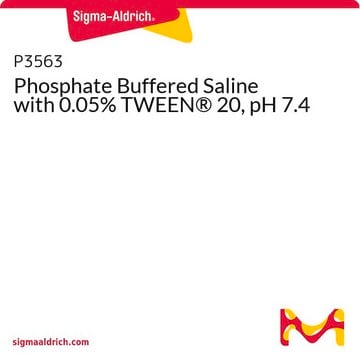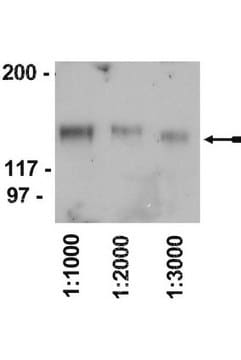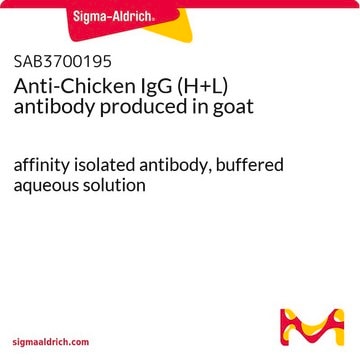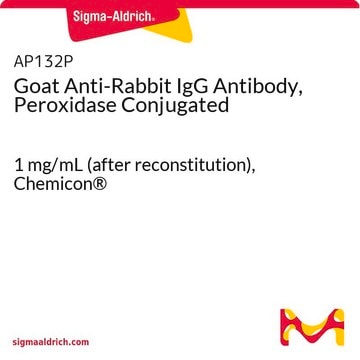AP162P
Rabbit Anti-Chicken IgG Antibody, HRP conjugate
0.8 mg/mL, Chemicon®
Sinónimos:
IgY
About This Item
Productos recomendados
origen biológico
rabbit
Nivel de calidad
conjugado
peroxidase conjugate
forma del anticuerpo
F(ab′)2 fragment of affinity isolated antibody
tipo de anticuerpo
secondary antibodies
clon
polyclonal
reactividad de especies
chicken
fabricante / nombre comercial
Chemicon®
concentración
0.8 mg/mL
técnicas
ELISA: suitable
western blot: suitable
Condiciones de envío
wet ice
modificación del objetivo postraduccional
unmodified
Categorías relacionadas
Descripción general
Especificidad
ANTIBODY SPEIFICITY:
Based on immunoelectrophoresis, the antibody reacts with the heavy chainjs of Chicken IgY and with light chains common to most chicken immunoglobulins. No antibody was detected against non-immunoglobulin serum proteins, but antibodies may cross-react with immunoglobulins from other species.
Aplicación
Secondary & Control Antibodies
Whole Immunoglobulin Secondary Antibodies
Forma física
Almacenamiento y estabilidad
Información legal
Cláusula de descargo de responsabilidad
Not finding the right product?
Try our Herramienta de selección de productos.
Código de clase de almacenamiento
13 - Non Combustible Solids
Clase de riesgo para el agua (WGK)
WGK 3
Punto de inflamabilidad (°F)
Not applicable
Punto de inflamabilidad (°C)
Not applicable
Certificados de análisis (COA)
Busque Certificados de análisis (COA) introduciendo el número de lote del producto. Los números de lote se encuentran en la etiqueta del producto después de las palabras «Lot» o «Batch»
¿Ya tiene este producto?
Encuentre la documentación para los productos que ha comprado recientemente en la Biblioteca de documentos.
Los clientes también vieron
Nuestro equipo de científicos tiene experiencia en todas las áreas de investigación: Ciencias de la vida, Ciencia de los materiales, Síntesis química, Cromatografía, Analítica y muchas otras.
Póngase en contacto con el Servicio técnico









